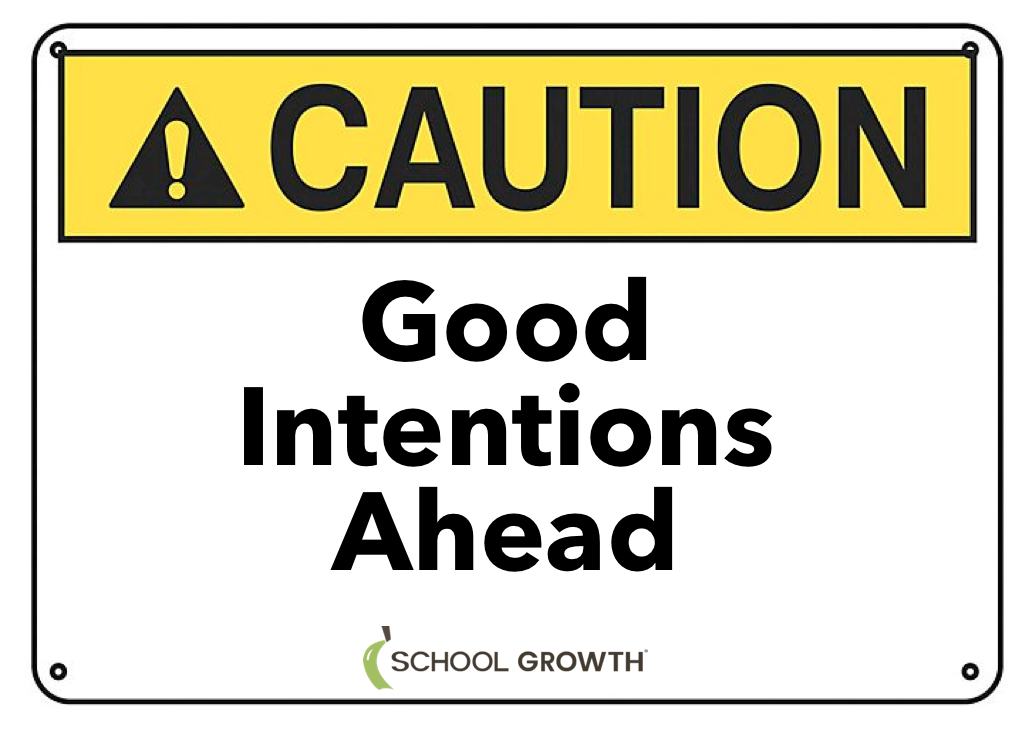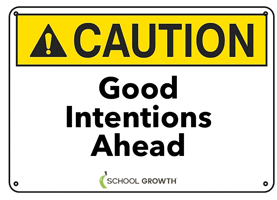
The Path to School Dysfunction is Paved with Board Intentions

Few board members have bad intentions at heart, but all of the dysfunction in education can be traced back to good intentions gone awry.
They really meant well, but they underestimated the complex ecosystem of relationships that comprise a school and the unintended consequences that resulted from their decisions.
No one wants to be dysfunctional.
Good intentions don't by default lead to good or even moral decisions by the leadership, so carefully evaluating the potential impact on the culture and ecosystem of the school is critical to achieving your growth goals.
When I was growing up, one of my go-to excuses when my sister happened to get hurt was: "I didn't mean to..."
To which my dad would usually respond with, "But you didn't mean not to!"
Therein lies the real issue, doesn't it?
It's not enough for board members to claim they didn't mean to cause dysfunction. Wise leadership is compelled to listen, learn, and mean not to.
Here are a few sample situations that contribute to dysfunction:
-
Setting short term-limits for the board chair
Often the board chair is as important as the chief administrator (head of school, superintendent, principal, etc.) to the success of the school(s). Some schools have bylaws that require short tenures. The problem is that it takes at least a few years to learn how to be an effective board chair and to develop a productive relationship with the chief administrator.
In our data, the most successful schools have a long-term board chair--at least 9 years--and are highly selective when choosing officers of the board.
One school was boldly proud of their requirement that the board chair only serve one year! What a miserable experience for their administrator, having to adjust to a new person each year.
Thankfully, after conducting an honest examination of their historical rate of leadership turnover and the dysfunctional behaviors that resulted, they modified their bylaws to allow at least three consecutive three year terms for the chair. -
Adding board members conveniently rather than rigorously
The board has the ultimate responsibility for overseeing the success of the organization. Adding members who are fully aligned with the mission, culture, and strategies is fundamental to responsible governance. Board members must be actively energized and engaged, and have a complete grasp of the duties, boundaries, and practices of board leadership.
You're always one member away from disastrous degradation of the culture and cohesiveness of the board--DON'T GET CARELESS! -
Reactionary measurements of success
Your chief administrator deserves to know how he/she will be held accountable--in writing and in advance. The performance rubric should be straightforward, utilizing valid and relevant key performance indicators (KPIs). Keep it simple by measuring what really matters, using your Strategic Growth Plan as a guide.
Board members with children who attend the school and/or with relatives who are employed by the school, must annually acknowledge their inherent conflict(s) of interest and must guard against using the experience(s) of their family members as evaluation data.
360 reviews are also very risky without appropriate training and professional implementation. We've seen more damage done through this process than good, despite the intentions. -
Hiring in a Hurry
"We were in a hurry when we hired our administrator, and now we have to make another change. We realize this decision is too important to be made in a hurry."
This quote is heard too often, where expediency becomes the priority rather than patient wisdom. Leadership turnover is a primary result of organizational dysfunction and is a major inhibitor of growth.
Remember: The path to greatness begins with Disciplined People! -
Threatening Termination
We have actually seen situations where members of the board said to other administrators of the school that they want to get rid of the chief administrator. Such unprofessional behavior undermines trust, creating an atmosphere of insubordination and fear. This should be grounds for the termination of the board members. -
Using the strategic plan to drive a personal agenda
Crafting a strategic plan for a school requires an approach that respects the realities of these complex organizations. Dysfunction abounds when the board tries to use the planning process as a way to achieve a personal agenda--perhaps replacing the chief administrator or gaining support for a particular program/initiative. No Secrets and No Surprises should be an established practice among the school's leadership.

.png?width=1000&height=199&name=SG-Logo3-Transparent-1000x199px%20(1).png)




